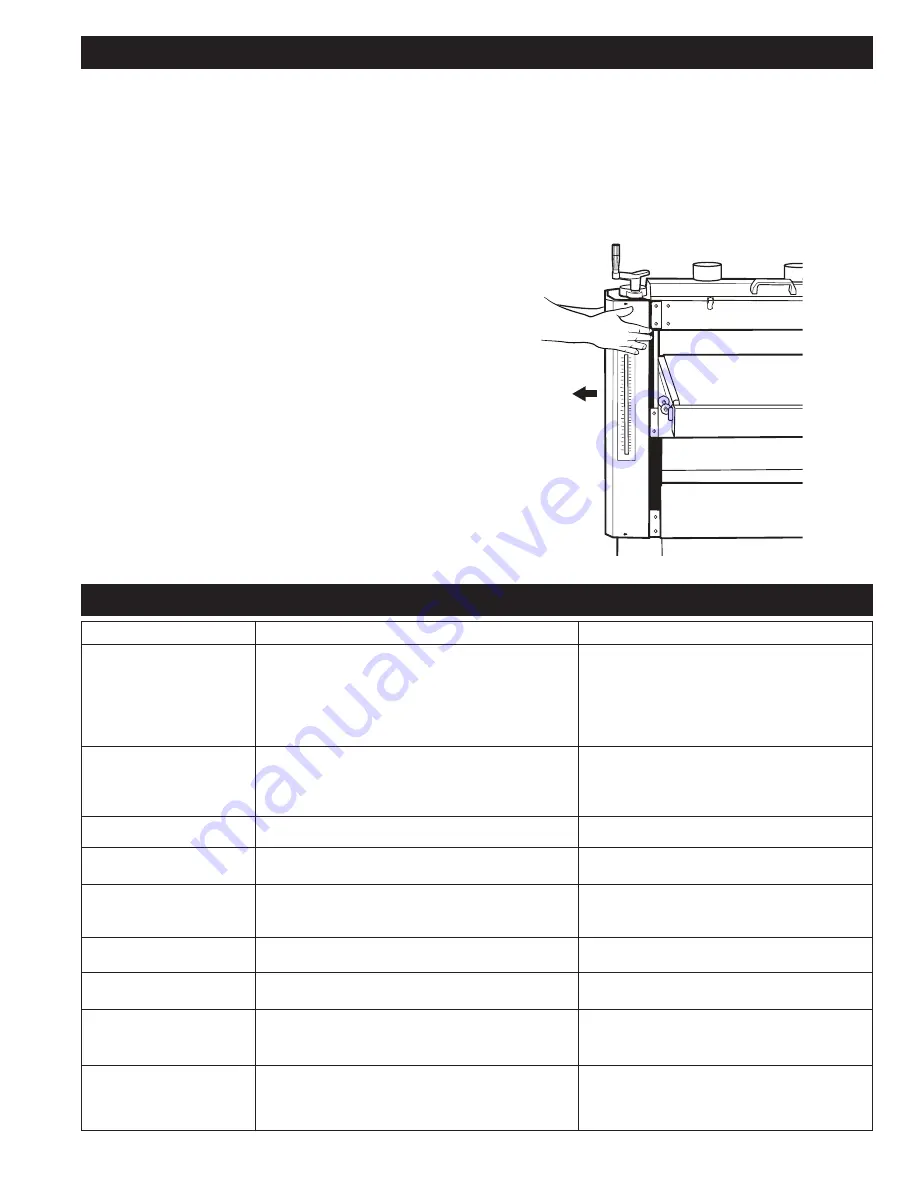
14
RECOMMENdEd MAINTENANCE PROCEdURES
ROUTINE INSPECTION
It is recommended that you periodically inspect your
DELTA
®
Dual Drum Sander as a precautionary action.
During this time, check all hardware such as bolts,
nuts and screws to ensure they are properly tightened.
Also verify that the sanding belts and drive belts are
mounted properly and have not become loose or torn.
Also take this opportunity to inspect for dust and/or
wood particles that may have accumulated on or in the
machine.
LUBRICATION
The table height adjustment screw shafts, located at
either end of the machine must be well lubricated with
grease at all times. In order to access, inspect and
lubricate the screw shafts, it is necessary to remove
the two side guards located on either end of the
machine.
To remove the side guards:
1. Remove the elevation cursor by unscrewing the
retaining screw.
2. Remove the eight Phillips head bolts and washers
securing the left and right side guards to the
machine and remove the guards. See Fig. 14.
3. Re-attach side guards and elevation cursor.
CLEANINg ThE SANdINg BELTS
Regularly clean the sanding belts on the drums with
commercially available cleaning sticks, following the
manufacturer’s directions. When cleaning, also brush
the stick crumbs from the sanding drum while it is still
rotating.
FIg. 14
TROUBLEShOOTINg gUIdE
PROBLEM
POTENTIAL CAUSE
SOLUTION
Sanding surface clogs too
quickly.
Sanding grit too fine.
Too much material being removed at once.
Dirty board surface.
Insufficient dust collection.
Board contains too much moisture.
Worn sanding belt.
Change to a coarser grit.
Adjust table height.
Ensure board is free of debris prior to sanding.
Inspect dust collection system.
Properly dry stock before sanding.
Replace sanding belt (Page 8)
Sanding belt tears.
Drums not parallel to feed table.
Sandpaper edges overlapped.
Tape is slipping.
Too much material is removed at once.
Re-align drums (Page 10)
Re-install sanding belt.
Rewind the loose belt on the drum.
Lower the table height.
Rounding on the edges.
Too much material is removed at once.
Lower the table height.
Uneven thickness on right
and left side of the board.
Drums are not parallel to feed table.
Uneven wear of sanding paper.
Re-align drums (Page 10)
Replace sanding belt.
Stock slips on the feed
belt.
Too much material is removed at once.
Too much dust on the feed belt surface.
Worn feed belt.
Lower the table height.
Clean surface with air hose.
Replace feed belt (Page 8)
Shiny spots on sanded
surface.
Sanding paper too old.
Drums too high.
Replace sanding belt (Page 8)
Lower table height.
Marks on sanded surface
Partial damage to sanding paper.
Paper overlapped on edges.
Replace sanding belt (Page 8)
Re-align sanding belt on drum
Feed belt does not
run smoothly or stops
completely.
Feed belt tension is incorrect.
Belt tracking is incorrect.
Adjust feed belt tension (Page 8)
Adjust feed tracking (Page 8)
Consistently noticeable
“snipe”
No out-feed support.
Pressure roller spring tension incorrect.
Drum height incorrect in relation to pressure rollers.
Use supplementary support in rear of
machine.
Check and adjust.
Adjust pressure rollers (Page 11)














































